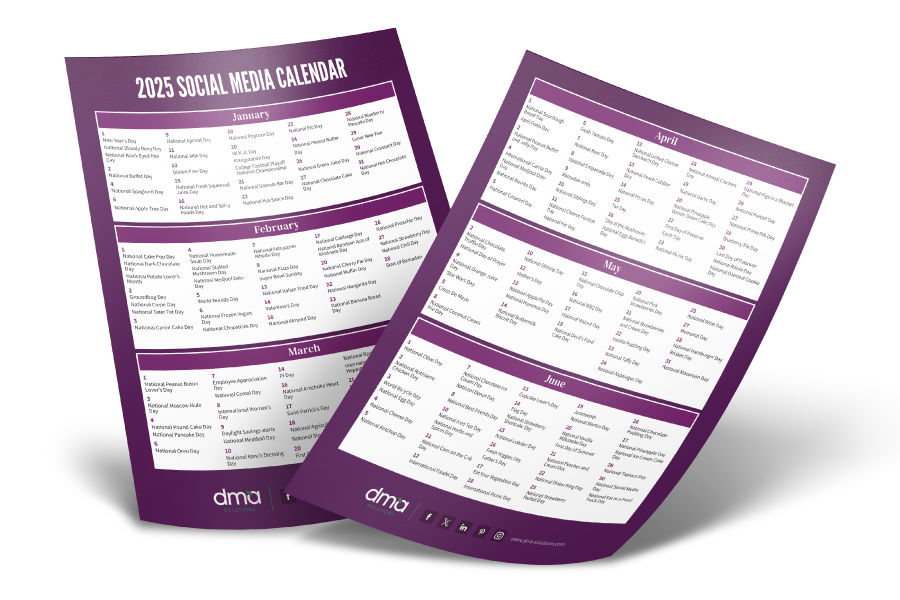Ahhh, Spring. For me, that word evokes the sweet scent of honeysuckle on the breeze and heralds the glorious return of warm weather and…well, cleaning.
Wait, don’t run! We won’t be talking about your long-neglected closets today, promise.
Instead, let’s delve into the kind of tidying that can increase visits to your blog and social media, improve your Google search rankings, grow overall brand awareness, and establish your company as an authority in the industry—no Lysol needed.
Where to Start
We’ll start with some basic “housekeeping” items, so to speak.
- Is all contact information on your website both up-to-date and easily accessible?
- Are your logos, boilerplates, and branding statements consistent and current?
- Have you included clickable, prominently displayed buttons for each social media platform (and blog)?
- Do you still sell every item listed on your products page? Is there anything new that should be added to the mix?
- Is your website mobile-responsive? If not, that’s costing you—big-time.
Now, let’s move on to decluttering.
Get Rid of Broken Links ASAP
You don’t keep useless items lying around the house—don’t leave broken links littered throughout your website (we promise, they WILL stink up your SEO over time). Fortunately, you don’t have to check each link on every page by hand: here are four tools to quickly check for broken links on your website.
Capitalize on Self-Promotion Opportunities (The Good Kind)
As your website and blog have grown over time, have you reviewed existing content and added relevant links to newer pages and blogs?
Why that’s useful: Internal links boost your website architecture by better establishing its hierarchy, including strengthening your pillar pages. Readers will greatly appreciate the improved usefulness and ease of navigation—and so will Google.
Make it Easy on the Media. (They *are* having a rough year, after all.)
Can reporters and PR professionals quickly scan your website and get in touch with the proper spokesperson in a timely manner? If not, consider adding a short section on your homepage or main navigation bar labeled “Newsroom” or “Media.” Even if that link just redirects to an existing but less obvious page, that one step will pay dividends in the form of fewer frustrated media members—which means fewer missed publicity opportunities.
Mind Your “Ps” and “Qs”…and Homophones, too.
Okay. No one is perfect: typos happen and so does autocorrect. But know this: your brand’s credibility does depend on weathering the “your/you’re” struggle. In fact, one study showed that a full 59% of participants were less likely to patronize a company with obvious spelling or grammatical errors on its website or marketing materials.
Get to the Heart of the Matter
Even if you only get as far as the above, congratulations: you have taken significant steps toward improving your SEO! But after that, the real “deep-cleaning” happens.
Identify—and Rectify—Your Weaknesses
When it comes to identifying the strengths and weaknesses of your website, data is your biggest ally. Check Google analytics for pages with sky-high bounce rates and low numbers for average time spent on page: you’ll find that those often include broken links, offer very little useful information, and/or are plagued by weak internal linking.
Get honest with yourself: does your website really capture the essence of your brand story and values—and convey it in a way that helps consumers identify with your brand?
Just not at all sure where to start? That’s okay! Here’s a step-by-step guide to building a better website, complete with best practices and analytics information.
Are You Preaching to the Choir?
If you are primarily a consumer-facing brand, does your content make sense to this audience? It’s always a good idea to have someone unfamiliar with the content (or at the very least, someone who didn’t write it) read through your pages and give you a fresh, unbiased opinion.
Next, determine whether that content provides useful information that meets the needs of your audience. For example: if your recipes use jargon that would require multiple Google searches for a reader to properly make the dish, you are catering to the experts, not your target audience.
Wondering whether it’s time to go completely beyond spring cleaning and start fresh? You Might Need a New Website If… [INFOGRAPHIC]
Speaking of preaching…you may know a few holier-than-thou gurus who exude this attitude toward your spring cleaning endeavors:
My advice? Don’t let those people steal your joy, friends. Depending on the size of your website, ongoing maintenance—let alone a full audit and update—can be an enormous and ever-evolving job. Know that every improvement counts, and it may even be worth it to bring in an expert.












